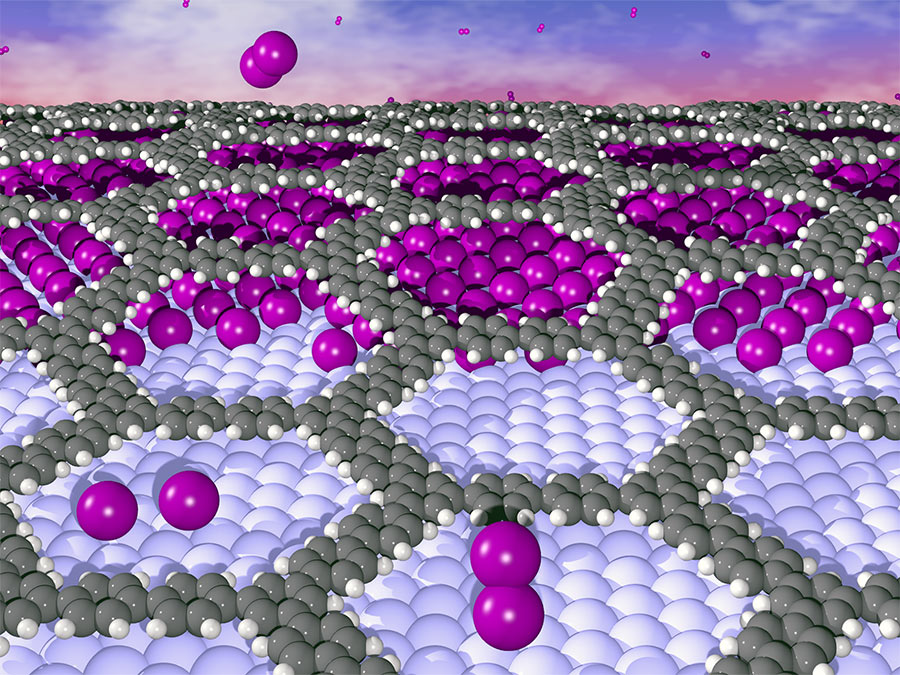Iodine atoms decouple organic nanostructures from metallic surfaces
Soft decoupling of organic molecules on metal

Specific organic molecules – typically on reactive metallic surfaces – can interlink via chemical bond formation into extended nanostructures. Highly stable two-dimensional molecular networks can be grown in this manner. However, these networks then adhere to the metallic support, which strongly influences their properties. To make use of these kinds of organic networks in molecular electronics, for instance, the metal would have to be laboriously removed.
Iodine vapour reduces adhesion
Now a team headed by Markus Lackinger at the Technical University of Munich together with partners at the universities of Linköping (Sweden), Kiel and Siegen (Germany) have discovered an elegant way to reduce the adhesion between the network and the metal. They simply exposed the networks bound to the metal to iodine vapor. “After the networks had been synthesized on a silver surface, we used iodine vapor. We hoped iodine would embed between the organic layer and the metal”, explains Lackinger.
To do this, they investigated a nanosheet consisting of interlinked phenyl rings (polyphenylene) on a silver surface. The iodine actually migrated beneath the interlinked phenyl rings to form an atomically thin interlayer on the metal surface. After the intercalation of the iodine, measurements at the synchrotron source BESSY II of Helmholtz-Zentrum Berlin (HZB) proved that the molecular network behaved almost as if it was detached. The strong influence of the metal was reduced.
Application: New transfer techniques
These results could be advantageous for future applications. “Molecular nanosheets do not grow on any surface. For this reason, we have to develop transfer techniques. Then we could fabricate the networks on metal surfaces and subsequently transfer them over to other surfaces that are more suitable for molecular electronics. Being able to mitigate the adhesion with an iodine interlayer is possibly a first step in this direction”, explains Lackinger.
The work was funded by the German Research Foundation (DFG) within the Cluster of Excellence Nanosystems Initiative Munich (NIM) and the Helmholtz-Zentrum Berlin. The measurements were carried out at HZB’s synchrotron source BESSY II in Berlin-Adlershof, the. Computational resources were provided by the National Supercomputer Centre of Sweden. Prof. Lackinger’s group is located in the premises of the Oskar von Miller Chair of Science Communication (Prof. Heckl), a collaboration between TUM and the Deutsches Museum, Munich.
Publication:
Post-Synthetic Decoupling of On-Surface Synthesized Covalent Nanostructures from Ag(111), Atena Rastgoo-Lahrood, Jonas Björk, Matthias Lischka, Johanna Eichhorn, Stephan Kloft, Massimo Fritton, Thomas Strunskus, Debabrata Samanta, Michael Schmittel, Wolfgang M. Heckl, Markus Lackinger, Angew. Chem. Int. Ed. – DOI: 10.1002/anie.201600684
Contact:
Prof. Dr. Markus Lackinger
Technical University of Munich
James-Franck-Str. 1, 85748 Garching, Germany –
Deutsches Museum
Museumsinsel 1, 80538 München
Tel.: +49 89 2179 605 – E-Mail – Web